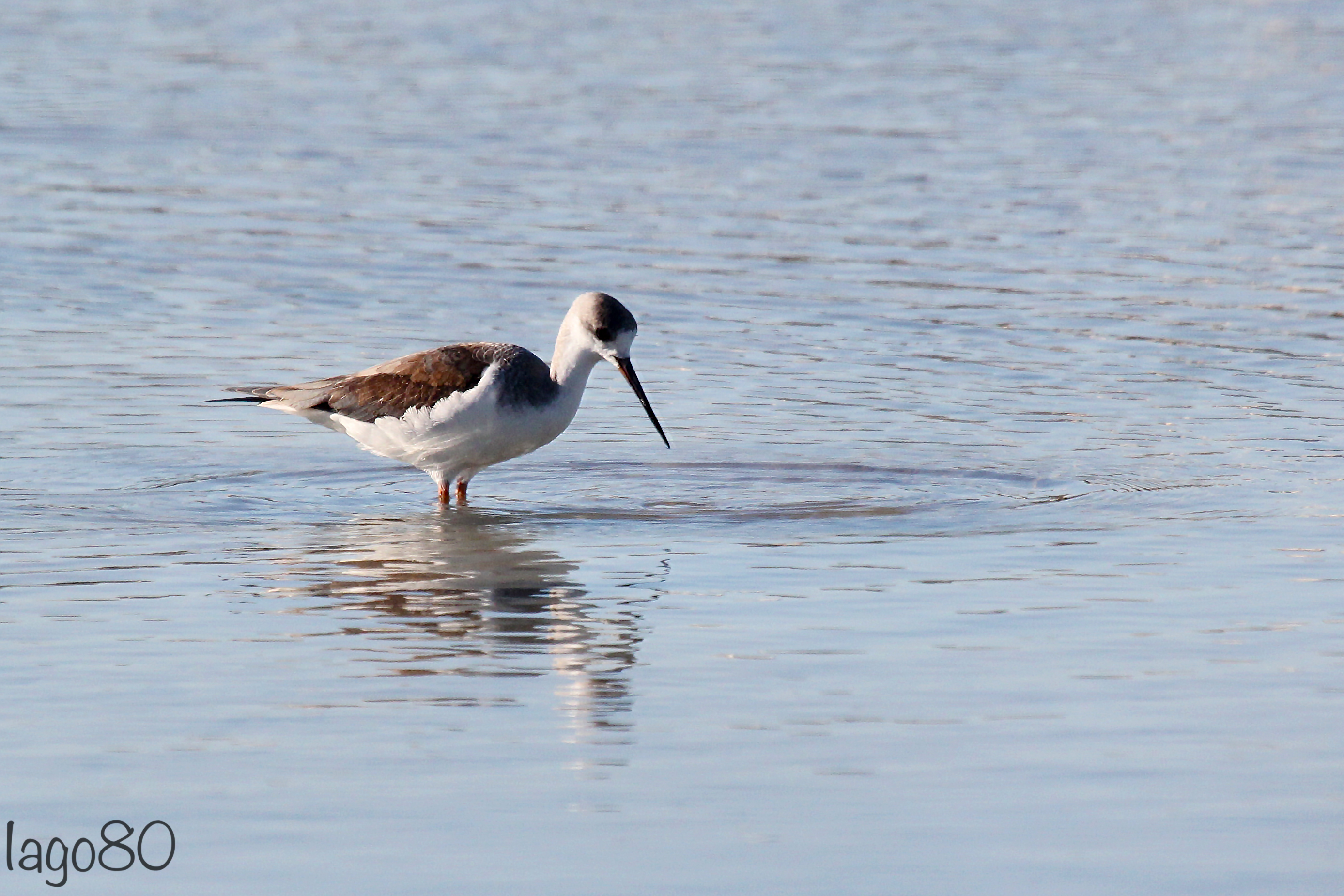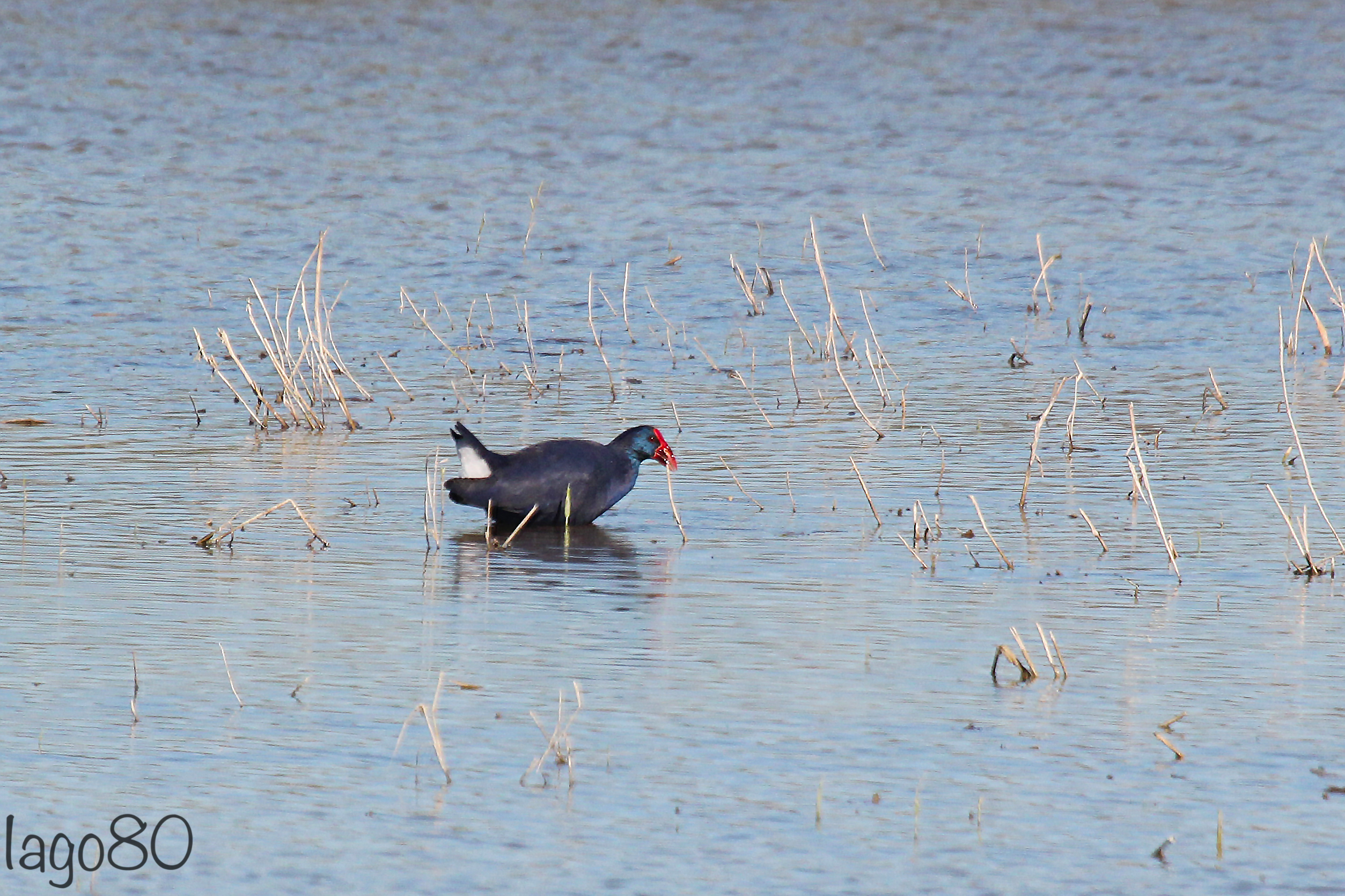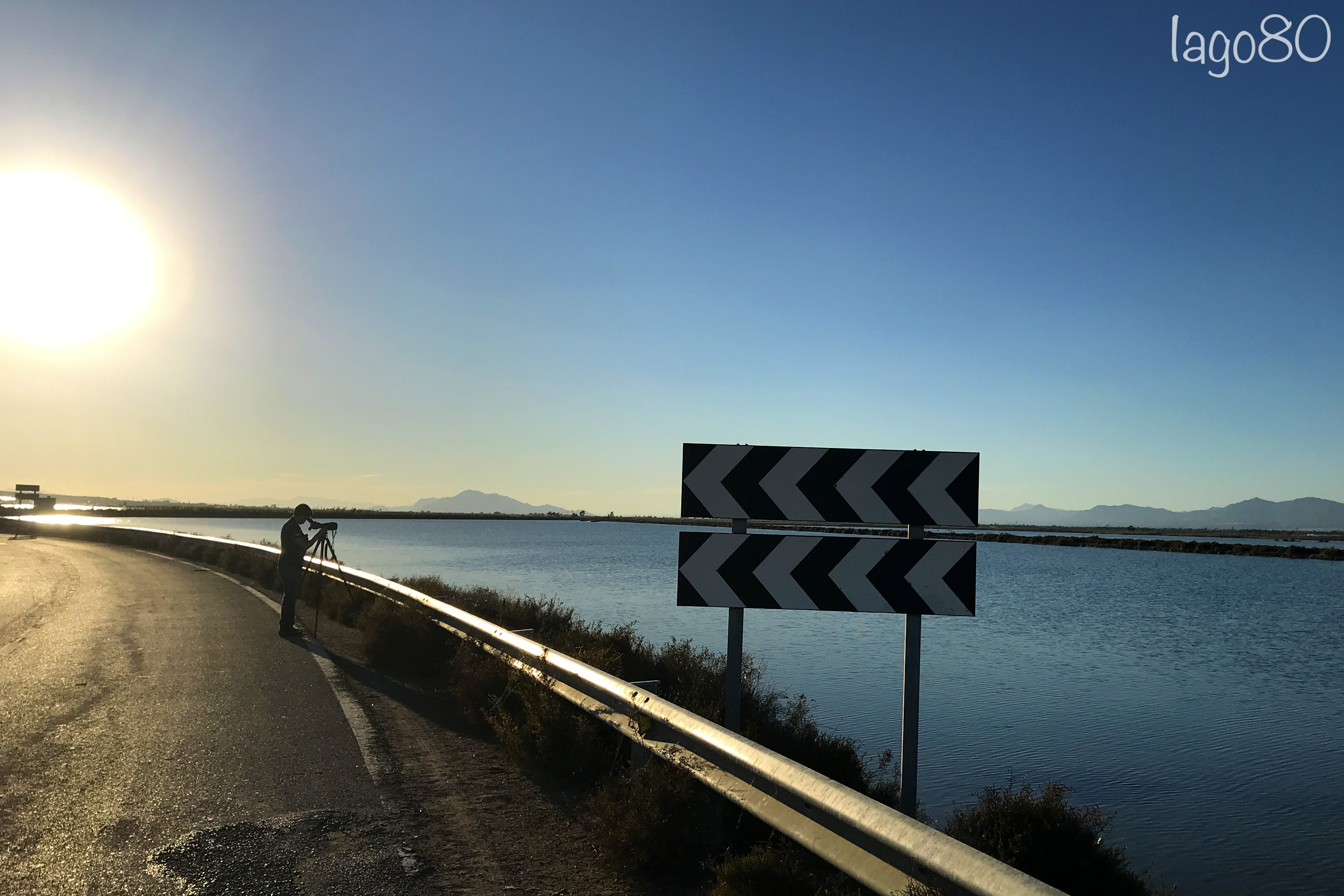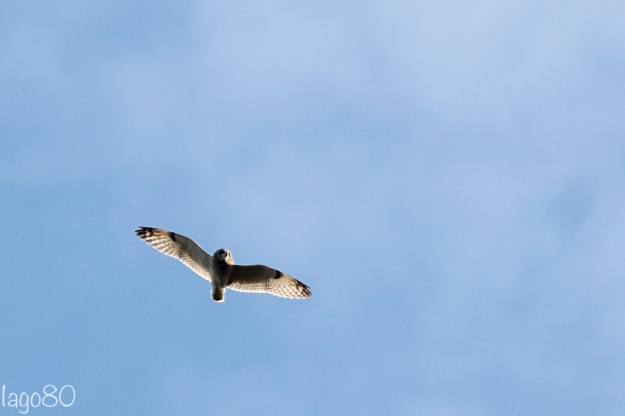This Sunday I spent all day birding. From dawn until dusk. In Spain.

Juvenile Black-winged Stilt (Himantopus himantopus)
The architect of this short and intense day of birding was my patch colleague, Jonathan, who has written up a great trip report on our day (and night) out. So, I don’t wish to duplicate what already exists on t’internet, nor can I duplicate the quality of his photos.
So, instead, I will do what I do best on this blog: ramble on a bit about my experiences in the wild: or rather, the impressions the wild leave on me and pepper these thoughts with lists and poor photos of the birds I see. Sounds gripping, huh?!
Spain is an important country for me. I spent a formative early-adult year of my life there and fell in love with the country, the culture, the people, the food, and even the language. I know some people think Italian is the most beautiful language in the world, or French, but nothing beats Spanish for me.
¡Ay sol! ¡Ay luna, luna!
Un minuto después.
Sesenta flores grises
enredaban sus pies. – Federico Garcia Lorca
The day began in the hills near Alicante. Just up from a rural town called Xixona.

As we drove along a narrow lane, Rock Sparrow flocks bounced through the olive trees in front of us with Serin, and Goldfinch in accompaniment.
Bushes clicked at us with Sardinian Warbler whilst Cirl Bunting threw their colourful heads back and sang to us in the bright light of a November morning.
But it was further down the hillsides where we found the first of our avian targets. Down in the rougher, drier land in the shadow of industrial factories and warehouses.

Abandoned building near Xixona
Way above us there were dots circling the peaks slowly like flies drunk on fermented fruit. Flys with bald heads and close-to three metre wingspans that is.

Four, possibly five, Griffon Vulture (Gyps fulvus). No, really!
I could zoom in more, crop, and present a more feasible record shot in all its pixelated glory, but the picture above captures the moment better for me.
We stood on one side of a small gorge and looked across to the other. Below us a small farmstead house (finca) obscured unidentifiable, parachuting larks (Thekla Lark or Crested Lark we wondered?). The finca’s inhabitant, an elderly Spanish farmer came up to see what two men with telescopes and cameras were doing above his land. But there was no hostility. He walked up the steep slopes, stood behind us for a while and must have wondered what kind of strangeness had been visited on him as we took turns to peer through a scope and celebrate distant views of Black Wheatear. The old farmer wished us a good journey as we left him alone on the rocks.
The gorge was surveyed by a Blue Rock Thrush and a small dole of Rock Dove nestled in holes in the vertical slice of sedimentary rock; geological time made physical.

Rock Dove (Columba livia)
Jono and I swapped dust and sand for water and reed at the famous wetland site of El Hondo:

El Hondo

It was from here that Jono found a Bluethroat on the shore
We were lucky enough to watch a single Marbled Duck, a life first for both of us, paddle silently amongst the Pochard, Mallard, Coot, and Shoveler.

Marbled Duck (Marmaronetta angustirostris)
Outside of the threatened marshes of southern Iran and Iraq, these are very scarcely and patchily found ducks. Whilst that was Jono’s only life tick of the day, I had three other lifers including a monster. Not a monster find or tick, just a monster…
There was an amusing moment as we first approached a pool when I smiled into my binoculars and told Jono I’d just seen a life tick. “What? A Moorhen?” came the reply. But eventually the giant came into view for Mr L as well; a bird superficially similar to Coot, but twice the size and stunningly coloured, looking like it had just swallowed three Moorhen whole.

Western (formerly ‘Purple’) Swamphen (Porphyrio porphyrio)
The artist formerly known as Purple Swamphen strutted about the reserve with its bright red, raspberry beret (sorry! I couldn’t resist that). Its relative size emphasised when a flock of ibis collected around it. We saw many more that day of both Swamphen and Glossy Ibis.

Glossy Ibis (Plegadis falcinellus)

We were also treated to brief appearances from Bluethroat and the onomatopoeic Zitting Cisticola. This was all whilst eagles crossed over our heads repeatedly. I had really hoped to see Bonelli’s Eagle, and perhaps the level of hope almost allowed myself to ‘string’ some of the early views of Booted Eagle into my intended quarry. Whilst not a lifer, the pale morph of these diminutive eagles showed well and we saw several throughout the day.

Booted Eagle (Aquila pennatus)
The vast El Hondo reserve was great but still largely remains a mystery to us both as its largest lake was hidden behind a biblically large wall of reeds that would have taken hours (almost literally) for us to walk around and peer behind its curtain. Time was against us and so we moved on to an even larger wetland system of salines called Santa Pola.

Torre en Santa Pola
We watched a number of waders ranging in size from Dunlin, Sanderling, and Kentish Plover, through Turnstone, Redshank, Greenshank, Avocet, and Black-winged Stilt up to Greater Flamingo.

Greater Flamingo (Phoenicopterus roseus)
We stopped at several sites around the salt ponds and I saw another lifer; a large flock or two of Slender-billed Gull dotted with Black-headed Gull and a Mediterranean Gull.

Slender-billed Gull (Chroicocephalus genei) and Black-headed Gull (Chroicocephalus ridibundus)
We stayed until the sun, which had blazed through clear blue all day, eventually bathed us in soft and cool golden light.

The chevrons point towards Mr L and the sun
It was close to dusk when I ticked off my fourth lifer of the day: a pair of Whiskered Tern that circled and skimmed a small roadside pool.

Whiskered Tern (Chlidonias hybrida)
Finally it would feel rude of me not to mention one more bird. Throughout the day, the species that seemed to keep us company the most – irrespective of habitat, was Black Redstart.

Black Redstart (Phoenicurus ochruros)
Jonathan travels a lot. I mean A LOT. He signs off his excellent trip reports with a photo of a stuffed panther called Snuffy. So I decided to do something in the spirit of an Attenborough documentary style ‘diary’ (US readers won’t know what this means as I believe the ten minute short ‘making-of’ films at the end of wildlife documentaries don’t make it across the pond as they are the result of packaged-up ad break times).
Here is a secret peak* into the making of the famous ‘Snuffy shots’:
*At a couple of points, passing cars would sound their horns at us. I wondered why, but then I was taking a photo of a man taking a photo of a stuffed panther. Nothing to see here! Move along now people!


































